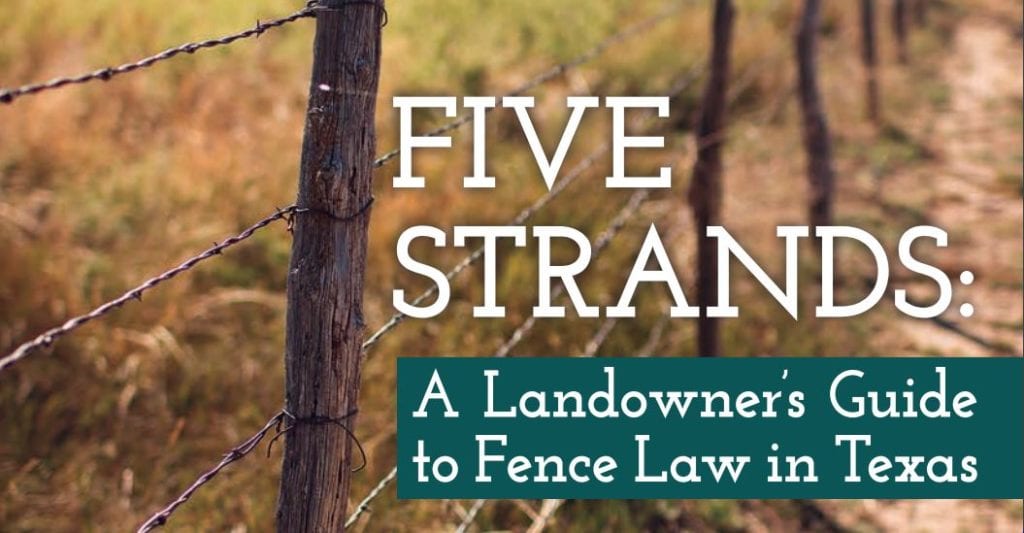
How does Texas’ open-range history interact with developments in fencing laws?
By Jim Bradbury, attorney with James D. Bradbury, PLLC and Chandler Schmitz, student, Texas A&M University School of Law
Texas’ history of being an open-range state traces its roots back to the trail drives and cattle barons of the 1800s. This tradition of being an open-range state historically has meant that livestock owners are not required to fence in their livestock in order to prevent them from roaming at large. As recently as 1999, the Texas Supreme Court upheld this concept and stated that “[i]t is the right of every owner of domestic animals in this state…to allow them to run at large.”
While the common law open-range principle is still in effect, two exceptions have changed portions of Texas from being open range to closed range – which does require landowners to fence in their animals and prevent them from roaming at large.
The first exception is local, county-based ordinances (stock laws), which make landowners responsible for fencing in the livestock on their property and creates a duty for landowners to prevent their livestock from roaming at large.
The second exception is the land along U.S. and state highways. State laws require landowners whose property is adjacent to state or federal highways to not “knowingly permit” their livestock to roam at large on these roads. Learn more about Texas fence law.
Recently, the line between Texas being an open-range state and these closed-range exceptions has been tested. In Garcia v. Pruski, the San Antonio Court of Appeals found that Wilson County’s stock laws were the controlling statute when a vehicle collided with a bull that broke a gate-latch and escaped onto State Highway 123. The court’s finding overlooked the long-standing Texas precedent of imposing liability for such incidents that occur on federal or state highways, based on the requirement that the landowner must “knowingly permit” the animal to roam at large on the road. The danger in the Appellate court’s finding is that it imposes a near “strict liability” standard of care on landowners, if their animals escape onto state or federal highways in counties that have passed stock laws.
A petition for review has been filed with the Texas Supreme Court for this case, in hopes that the Court will use this case as an opportunity to affirm Texas’ tradition of being an open-range state and of enforcing reasonable standards of care for livestock owners.


